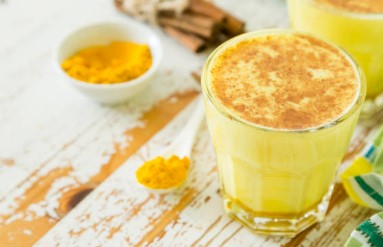Fresh Ginger Vs Powder: Which is Best for You?
Ginger is a versatile spice appreciated not just for its culinary uses but also its unique properties. While fresh ginger and ginger powder have their distinctions, both can be valuable additions to your kitchen.
Fresh ginger has a sweeter and more pungent flavor—a flavor profile that is more complex than that of ground ginger. Ground ginger, too, has many well-known properties and contains more shogaol, a spicy and piquant compound. Both fresh ginger and dry ginger can be consumed, although ground ginger has a more stable and longer shelf life, and can withstand high heat better. Powdered ginger lends warm and spicy notes to food – both savory and sweet. Fresh ginger can also be added to food – ginger tea is a favorite with many people.
Depending on preference and taste, dried or fresh ginger can be added to whatever one is consuming. It is always better to start with smaller quantities – a one-eighth teaspoon of ground ginger or a tablespoon of fresh ginger should work.
Ideally, if one has health concerns and or taking medication, it is recommended to check with one’s physician before making any additions to the diet, irrespective of the health benefits of an ingredient.
Those suffering from gallbladder stones, ulcers, inflammation of the bowels, bleeding disorder, and other such conditions, should definitely consult their doctor prior to consuming ginger in any form. The same holds true for those who are allergic to ginger, cardamom, and other herbs and spices that belong to the same family.

$11.99 $9.49 20% off
UNLOCK AN OFFER FOR YOU!
Subscribe to our newsletter & stay updated! What's more - A SPECIAL DISCOUNT ONLY FOR YOU!
How is ginger good for you?
While there are several arguments for the benefits of dry ginger versus fresh ginger, the fact is that both have some well-known properties.
Which is better, ginger powder vs fresh ginger?
When ground, the properties of ginger undergo some changes. However, if you decide to add this spice to your diet, you may see some positive changes. If possible, it would be best to use a combination of both fresh and dry ginger. Fresh ginger remains potent for a while outside of the refrigerator, too. Ginger tea is very popular in India, given that it is soothing, especially in the cold months. Ginger is commonly used across East Asia, South Asia, Southeast Asia and West Asia. Ground ginger finds takers since it is more convenient and stays fresh longer than fresh ginger.
The interesting fact about fresh and dry ginger is that they have different effects. Did you know? Crystallized ginger can last up to 2 years if stored properly!
Here are some tips you’ll find helpful when it comes to storing both forms of ginger.
Storing Fresh Ginger
Refrigeration: Place the ginger root in a resealable plastic bag or an airtight container to prevent moisture loss. Ensure it's dry before storing to prevent mold growth.
Freezing: Peel and chop the ginger into smaller pieces or grate it before freezing. Store the ginger in an airtight container or a resealable bag.
Keep It Dry: Avoid washing it before storage, as moisture can lead to mold growth. Instead, clean it just before using.
Replace the Wrap: If you're using plastic wrap to cover ginger, make sure to replace it with a fresh piece if it becomes moist.
Storing Ginger Powder
Airtight Container: Transfer ginger powder to an airtight container with a good seal. This helps prevent exposure to air, moisture, and light, which can degrade the quality of the powder.
Cool, Dark Place: Store the ginger powder in a cool, dark, and dry place, such as a pantry or a kitchen cabinet. Avoid storing it near the stove or in direct sunlight.
Buy in Small Quantities: If you don't use ginger powder frequently, consider buying it in smaller quantities to ensure that you use it while it's still fresh.
Now that you know everything about ginger and its form, go ahead and add it to your dishes today!
UNLOCK AN OFFER FOR YOU!
Subscribe to our newsletter & stay updated! What's more - A SPECIAL DISCOUNT ONLY FOR YOU!
UNLOCK AN OFFER FOR YOU!
Subscribe to our newsletter & stay updated! What's more - A SPECIAL DISCOUNT ONLY FOR YOU!







